Last-Minute NYC Holiday Gift Guide 🎁
We’ve created a holiday gift guide with presents for the intrepid New Yorker that should arrive just in time—


As recently as the late 90’s, the neighborhood around the High Line was once gritty, raw, and somewhat dangerous, while the elevated railroad itself was a mysterious and dilapidated structure. For better or for worse, due to the development of this infamous park, it is now saturated with new luxury residential buildings, posh hotels, upscale boutiques, glamorous restaurants, and tourists. As the area around the High Line thrives economically, there there has been some backlash against the gentrification. Therefore, it is no surprise that graffiti removal along the High Line has become symbolic of this gentrification and has been very controversial. People who are oppose the buffering say that this is erasing art as well as New York history.
The High Line was a refuge for graffiti writers during the time of its neglect. Examples of graffiti went from poor to great quality, and included writers both famous and anonymous. There were exceptional pieces from legendary artists including Sace, Cope2, Ces, and Marty. Neck Face left a yellow snake on the bottom of the third section. It is located behind the elevator at 30th Street.
Below, The REVS/ COST mural is one of the last remaining examples of High Line graffiti which is located in the second stretch. However, this mural was recently treated with a chemical agent that faded it dramatically. It is unknown how long this incarnation will be allowed to remain on the wall.

Throughout Sections 1 and 2 of the High Line, walls that were once graffitied are now painted grey . To many, this grey paint is a symbol of a covering up of the raw character of the neighborhood and an increasingly sterile environment.
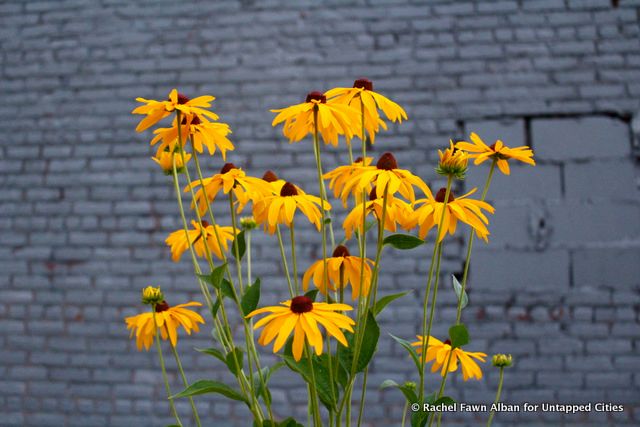
The third (and final) stretch of the High Line from 30th to 34th Street is still somewhat wild and closed to the public except for special events including the Carol Bove art tours. The area is presently a lot more cleaned up than when we visited in April 2012. Along with much of the graffiti, brushes, and debris have been cleared away. According to our tour guide from Friends of the High Line, the remaining graffiti definitely will be scrubbed away, pulled down, or painted grey like most of the surfaces along the rest of the High Line, and the landscaping will be manicured as well.
Some of the graffiti that is still intact:
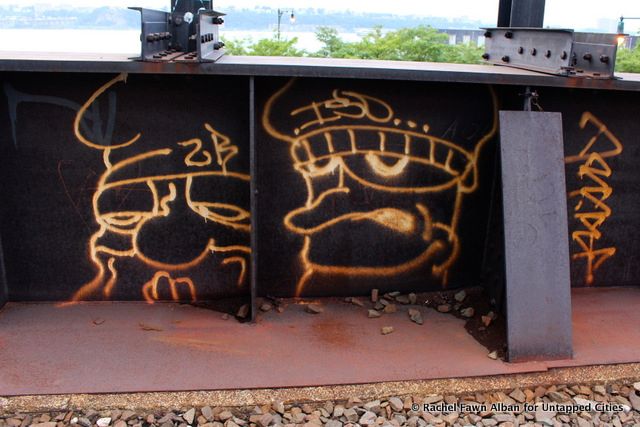
Much of the graffiti on the metal walls has oxidized and taken this gold hue. Some of the tags include dates. The earliest we found was from 1999.
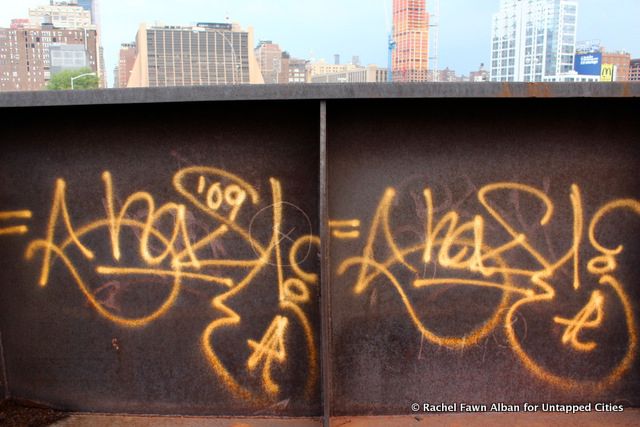

In addition to the gritty tags and traditional graffiti pieces, there are words written in paint scattered throughout Section 3. These words do not look street or urban at all and they aren’t names of writers. Whatever the purpose, they are part of the High Line’s unknown history, and probably date from the time when it was sitting neglected.
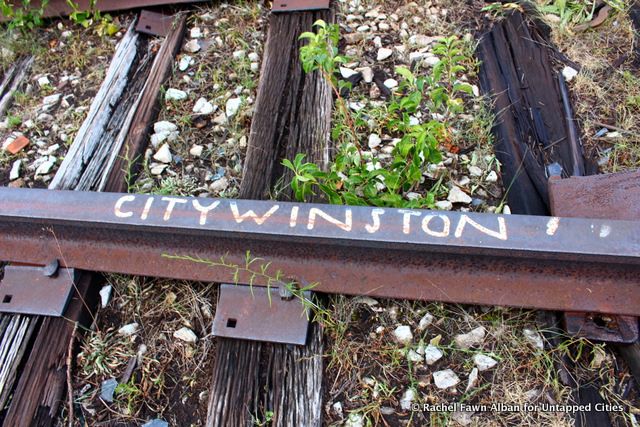
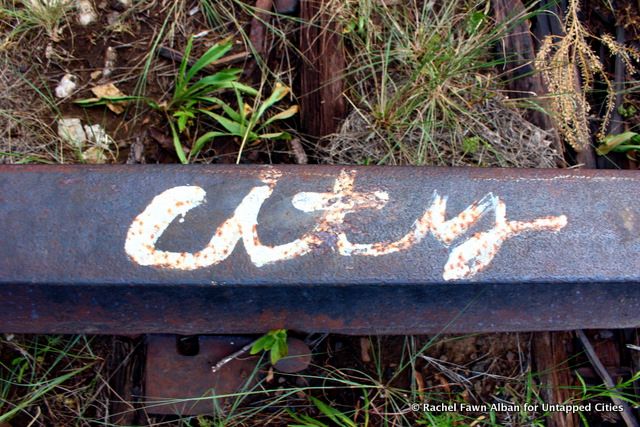

The original switch box for the railroad is a fascinating feature of section 3. Over the years, it has been graffitied and re-purposed as a container for bonfires. This box will likely be refurbished, scrubbed clean, and integrated into the High Line design.

Here are a few images of graffiti shot in October 2012 that are gone by the time of this writing in July 2013:
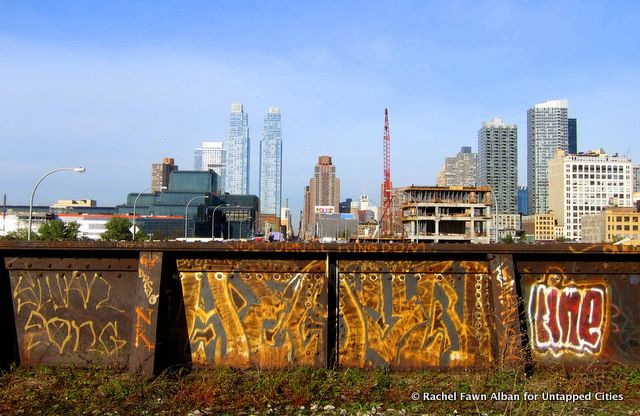
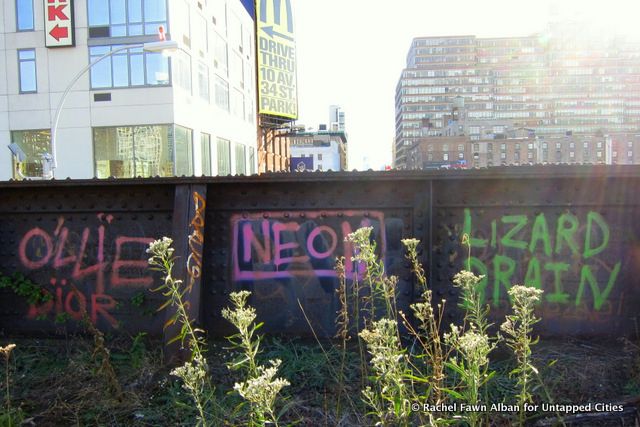

The same area now is presently an active construction site:

Now is the time to check out Section 3 of the High Line, as this is the last opportunity to see it in its “natural” and raw state before it is landscaped and opened in 2014. In a few years, this whole area will look dramatically different. Presently, section 3 overlooks the rail yard, and area which will be entirely covered over by the Hudson Yards Redevelopment Project, a new, modern, 27-acre neighborhood.

Be sure to check out last week’s Untapped post on the High Line, in which we looked at bits of history on the elevated train tracks themselves.
See more photography from Rachel Fawn Alban.
Subscribe to our newsletter